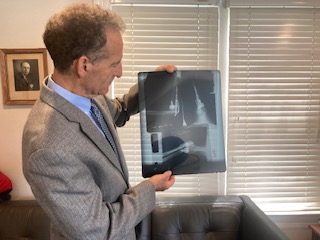
What’s the Big Deal With Acute and Chronic Injuries?

Chronic injuries are often harder to prove for a case. Because there is no contemporaneous documentation, bleeding, swelling, discoloration, fracture, dislocation, or audible sign (i.e., a “snap, crackle, or pop”). It can be a long process to pinpoint how the injury occurred and if the defendant is to blame. Unless the event made it miserably worse, it’s going to be difficult to convince the jury of the damage and there may be no reimbursement because of the lack of proof. In some cases, there is a pre-crash x-ray, MRI or other diagnostic study to compare as against films taken afterwards. That is compelling evidence of “Before vs. After.” However, most people, if they are not having symptoms, do not get routine MRIs, EMGs, CT scans or x-rays.

In many cases, the insurance defense lawyers will argue that while the disabled victim has pain in their back, limited range of motion in their neck, or degenerative disc disease, that this was a long time coming, that they had a hard-working life, and that it is not related to the crash caused by their client. They will argue that the injured plaintiff would had needed the same treatment, surgery, physical therapy etc., as the process of her arthritis, tendinitis, bursitis, etc., as well as way before the unsafe defendant crashed in to them. Where the injured plaintiff has treated with a family doctor, internist, or primary care physician for a long time before, as well as after a crash, that physician may be in a good position to render an opinion as to whether not the current need for treatment, disability, and/or permanency, are all, or partially related to the crash. It is not enough for the plaintiff to claim that they had pain after a crash. That is simply “temporal causation.” In many cases, there needs to be “actual causation,” where the doctor can pinpoint a specific, anatomical change in the body, that was caused by the defendant’s unsafe conduct at that instant.
